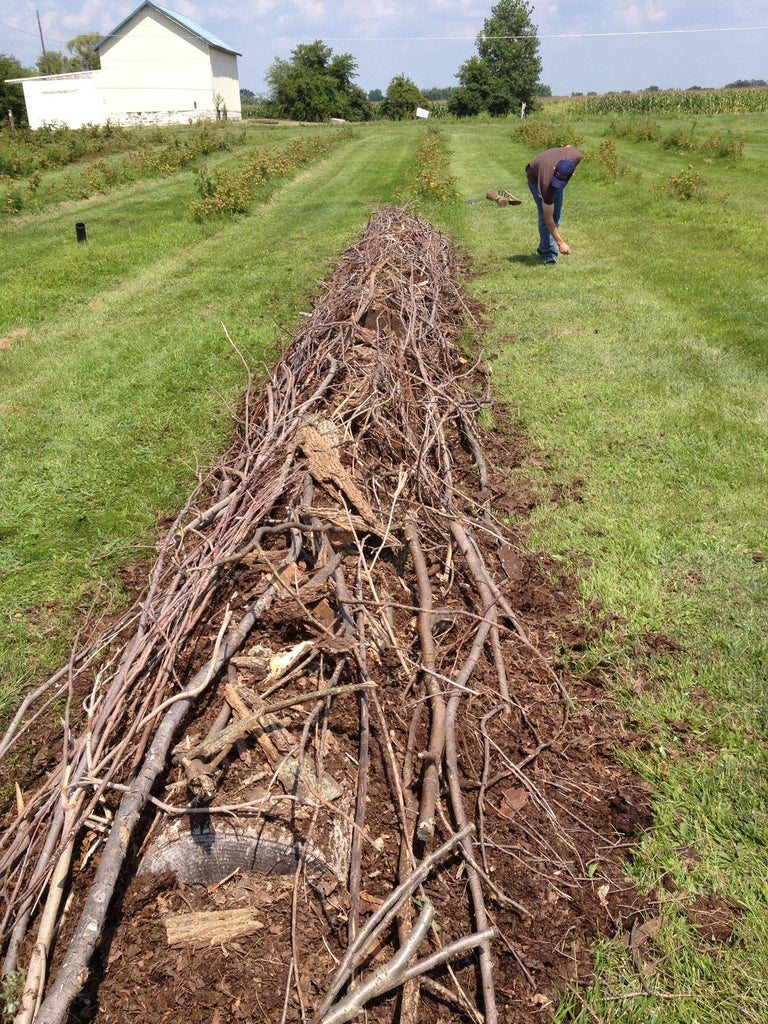
Gardening has a long history—likely being nearly as old as agriculture itself and found in myriad forms all over the world. This makes gardening a dazzlingly complex pursuit, but that’s part of the joy and the fun—there’s always something new to explore and always another experiment to try. So for this week’s blog, we’ll be looking at an increasingly popular gardening technique and what role it might play in your garden. Hügelkultur combines gardening and permaculture, sustainability and simplicity. So what is hügelkultur, where does it come from, and how can you use it in your garden? Let’s dig in!
Hügelkultur is a German word, meaning something like “mound culture”. It’s a horticultural technique that has its roots in forestry management and developed over centuries, with the term “Hügelkultur” first appearing in the 1960s. The essential idea is this: create a mound of wood or other plant debris, cover with compost and good topsoil, and then immediately plant it as you would a raised bed. In theory, the core of wood and plant matter decay and raise the soil temperature, retain water, and create nutrients. This supports plant growth in a long-term sustainable way, making best use of natural materials and reducing the amount of effort needed to maintain the garden.

The construction of a typical hügelkultur bed goes something like this. As a reminder: these are generalized, basic steps—circumstances, available materials, and intended use may require some variation:
- As with all gardens, hügelkultur starts with site selection. The ideal site for a Hügelkultur bed is about 3 feet by 6 feet, or .9 meters by 1.8 meters. If possible, select a site that gets enough sun for the plants you want to grow.
- Next, we build the actual mound itself. This is typically done by using the largest pieces first, so a core of logs, branches, and tree limbs is constructed directly on the ground first, and then surrounded by leaves, lawn clippings, and other plant matter before thick layers of compostand good topsoil or garden soil are added. The result is about three feet/.9 meter high. When building a hügelkultur heap on a lawn or other grassy area, removing the turf and grass first so that the bed is on bare earth may be best.
- Quick tip: when building on a slop or hillside, construct the hügelkultur at an angle to the hillside or slope, rather than parallel to it. Gravity is part of the process, so make sure your mound is as straight up and down as reasonably possible. This makes sure that the materials decay and retain water evenly.
- Hügelkultur are typically left to rest for a while before planting—three to six months is typical. You can plant sooner, but we recommend ensuring that the soil/compost layers are thick enough and that you restrict your immediate planting to smaller plants with lighter root structure. For veggie gardens, beans and peas might be ideal and help add nitrogen to your mound. For decorative gardens, wildflowers and other smaller natives might be fun!
- After a few months, it’s time to plant! Hügelkultur beds release their nutrients fairly soon after construction, so the first year is the best time to plant vegetables with robust nutritional needs: corn, squash, cucumbers and melons, tomatoes, corn, potatoes. In the second year, less demanding crops like beans, peas, and strawberries will thrive unless you add more compost or fertilizer.

Once your hügelkultur bed is in place, it requires much of the same maintenance as any other garden: weeding, watering, and pest management. The good news is that the moisture-retaining and soil-creating properties of a hügelkultur bed mean that it will likely require less watering and fertilizing than a conventional garden, and that plants may grow faster due to the warm, living nature of the hügelkultur soil. Once in place, a hügelkultur bed typically lasts three to five years depending on construction, climate, and use. At that time, the hügelkultur bed will need to be rebuilt and the process will start over.
So now that we’ve seen a brief overview of how hügelkultur works, let’s talk about whether or not it’s right for your garden. The answer is, as always, “it depends”. If you have space to devote to a hügelkultur bed and a large amount of tree waste to dispose of, hügelkultur might be quite useful to you. For the backyard gardener, Hügelkultur can provide a point of visual interest, add a vertical aspect to landscaping, and act as a light-duty swale. It’s another tool in the gardener’s arsenal and another potential experiment for the adventurous gardener. Whether or not it’s right for you will depend on your space, your goals, and your needs.
If you have any experience with hügelkultur, or if you have any questions about it, please let us know. By sharing our gardening journeys, we can all learn and grow as gardeners. Gardzen is all about community, and we love to hear from you!

Leave a comment